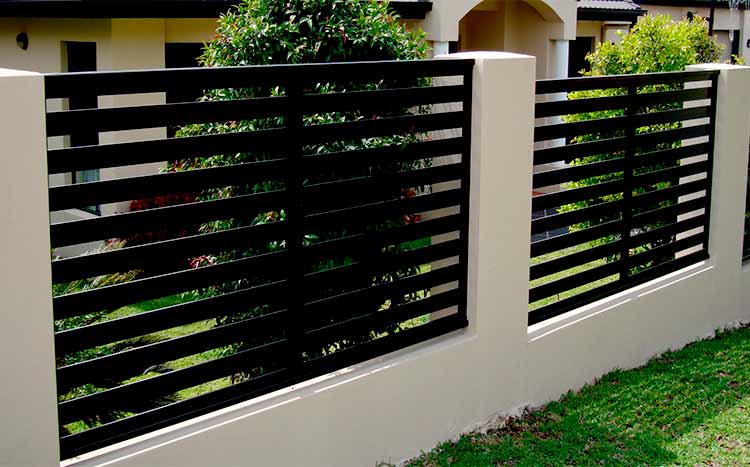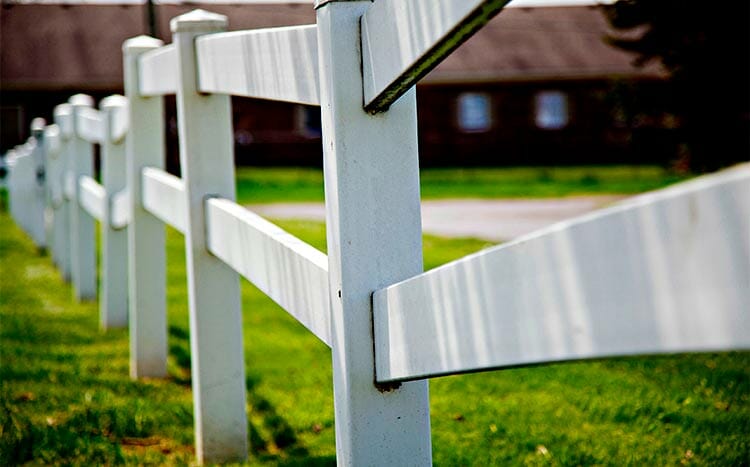In Hawaii, disputes over property lines between neighbors happen often. There’s commonly a debate among homeowners over whose duty it is to upkeep a dividing fence and what actions are considered as trespassing. Occasionally, these conflicts require the involvement of city officials or businesses.
If you ever find yourself in this situation, the Hawaii fence and property line laws can be useful in helping resolve disputes peacefully.
Here’s a review of some of the laws you should know.
What we cover
ToggleDo I need a permit to build a fence in Hawaii?
It depends on the size of your fence. In many cases, you won’t need a fence building permit for a fence 6 feet (72 inches) or shorter in height. If you’re building a temporary fence for not more than 180 days, you’ll need a temporary permit.
You might also need a flood development or special management area permit, depending on the location of your fence.
These regulations vary depending on your location. For instance, in Honolulu, you’ll need a building permit for any new fence installation costing more than $1,000.
Contact the Department of Public Works in your county to see if your fence will require a permit.
Can I replace an existing fence without a permit?
Yes! Most counties won’t require a permit if you’re replacing the existing fence with similar material and height. The project should, however, not aggregate to over $1,000 over 12 months, and shouldn’t affect any plumbing or electrical structures.
If the existing fence was built without a permit, the law may require you to obtain a permit before proceeding with any repairs.
You will also be exempted from getting a permit when conducting fence repairs as long as no component addition or modification is involved.

How tall can a privacy fence be in Hawaii?
Most local county ordinances and Homeowners Associations have set the fence height restrictions at 6 feet. Barbed wire or chain link fences are allowed to a maximum of 8 feet due to their see-through visibility.
There are no restrictions for the front, side, or rear yard fences. For properties near the edge of an abutting road, the fence height is restricted to 3 feet.
In areas where fence heights aren’t regulated by the Land Use Ordinance, structures over 6 feet require the approval of the fire department.
Who owns the fence on property lines in HI?
In many cases, both neighbors are regarded as owners of the fence on the property line. This rule is made by the court since Hawaii doesn’t have a statute regarding boundary fence ownership.
As such, each adjoining neighbor is equally responsible for the fence maintenance and repairs. Additionally, one neighbor can’t legally remove the fence without consulting the other neighbor first.
How do you know where the property boundary is?
The best way to find your property lines is usually by hiring a professional land surveyor. He/she will locate your boundaries and use stakes (wood or metal peg) to make the property lines visible.
Sometimes, they might also paint the rocks or vegetation on the property corners with bright paint colors.
If you don’t wish to pay for the survey, you can also check the local county assessor’s office for the plat map of your neighborhood.
Can my neighbor build a fence on the property line?
Not without your permission or the consent of the circuit court. If you don’t agree to the neighbor’s fence proposal, Hawaii Revised Statutes Division 4. Courts and Judicial Proceedings § 664-21 – 23 strictly state that the court has jurisdiction to hear and determine the proposed fence petition.
It will decide on an equitable kind of fence to be erected and the contributions to be made by each neighbor for its maintenance.
Can I put up a fence on my side of the property line?
Yes, you can put up your fence on your side of the property line. The county authorities in Hawaii won’t have a problem with the fence as long as you’ve observed the regulations in your area. You also have to ensure you follow the Homeowner’s Association rules.
Important: To avoid encroaching on your neighbor’s property, you should do a property survey.

What is a spite fence?
A spite fence refers to any fence or similar structure constructed out of spite (hate or anger). They’re usually taller than the standard height and intentionally painted ugly, to annoy the neighbor or restrict their enjoyment.
In Hawaii, there’s no legal statute covering such fences. However, the courts have the jurisdictions to listen to such a case and order the removal of the spite fence.
When Your Fence Encroaches a Neighbor's Property?
Fence encroachment happens if your fence strays even an inch into your neighbor’s side of the property line. In such a case, your first action should be talking with the neighbor.
For minor encroachments, you could agree to move the fence after a while, or the neighbor might not mind the encroachment. Either way, always ensure that you sign a written encroachment agreement so that the neighbor doesn’t tear it down.
Note: Under the Hawaii ‘De Minimis’ encroachment law, fences built up to 0.5 feet into your neighbor’s property aren’t regarded as encroachment. However, you’ll remain responsible for the maintenance of that encroached portion.
If you neighbor a commercial, multi-unit, or industrial property, the discrepancy position allowed is 0.25 feet. For neighbors of agricultural and rural properties, It’s 0.75 feet, while for those neighboring conservation properties, it’s 1.5 feet.
Hawaii Fence Law Basics
According to the Hawaii fence laws, a privacy fence is defined to be a structure not less than 4 feet. The Hawaii Revised Statutes Division 1. Government § 142-61 also states that to be lawful, the fence should be made from either stone, posts and wire, posts and rails, posts and boards, among other suitable materials.
While the statutes don’t offer any direction regarding ownership of a shared fence, the state adheres to the Hawaii court-made laws, which require adjoining neighbors to share responsibility for a boundary fence.
These fence and property line laws apply to all properties not controlled by the local city and county ordinances, as well as agricultural lands.
Hawaii boundary fence laws at a glance
This table provides an overview of some of the state laws governing Hawaii’s fence laws and links to their original documents.
| Statues | "De Minimis" Encroachment | Local Fence Regulations |
|---|---|---|
| Hawaii Rev. Stat. § 142-61: Lawful fence - penalty Hawaii Rev. Stat. § 142-62: Breaking of the fence - penalty Hawaii Rev. Stat. § 664-21: New fences Hawaii Rev. Stat. § 664-23: Boundary dispute resolution Hawaii Rev. Stat. § 669-12: Effect of de minimis encroachment Hawaii Rev. Stat. § 669-11: De minimis encroachments defined | A "de minimis structure position discrepancy" is where a structure extends onto the adjoining property by no more than: ● 0.25 feet if it is for commercial, industrial, and multi-unit residential property; ● 0.5 feet for all other residential property; ● 0.75 feet if it is for an agricultural and rural property; ● 1.5 feet for conservation property. | City of Honolulu Fence code Village of Kapolei Code and ordinances County of Hawaii (including Hilo) Permit information |
Keep in mind; These laws are bound to change with time depending on the new legislation, federal court decisions, and other initiatives. Use the information provided above as a guide and research the latest regulations in your municipality.
FAQ's
Who owns the fence between neighbors?
Hawaii doesn’t have a fence law statute recognizing joint ownership of fences on the property line. Nonetheless, the state follows laws from the court that recognizes adjoining neighbors of the partition fence as co-owners.
What if a new fence is blocking my view?
If your neighbor’s fence is blocking your view, you have the option to file a lawsuit against them on grounds of a spite fence. Nonetheless, you’ll still need enough evidence to prove the claim.
Can my neighbor hang things on my fence?
It depends on your agreement. If the neighbor hangs things without your permission, the Hawaii fence laws give you the right to remove them. For shared fences, however, the neighbor can rightfully hang things on their side of the fence.
Can I paint my side of the fence?
You can, but you’ll have to comply with your neighborhood’s HOA regulations. The Hawaii courts may also have set the type and appearance of the fence on the property line, which you also must consider.
Can I build a fence next to my neighbor’s fence?
Yes! So long as you maintain the fence within your side of the property line, you can put up a fence next to your neighbor’s fence.
How close to the property line can I build a fence?
Different neighborhoods have different regulations regarding fence setback positions. However, anywhere from 5 inches to 2 feet is a good setback distance for your fence from the property line.
What is a property line encroachment?
Property line encroachment refers to a situation where one neighbor violates the property rights of another neighbor by extending their structures over the boundary lines into their property. This might occur intentionally or not.
Is a fence an encroachment?
If the fence built veers past the property line into the other neighbor’s land, then the fence counts as an encroachment.














